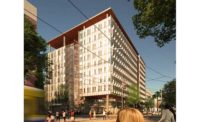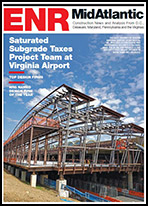Another much-anticipated Metro project is the $1.43-billion Regional Connector Project. Slated for completion in 2020, this line will extend from Little Tokyo to downtown Los Angeles, allowing passengers to seamlessly transfer to the Blue, Expo, Red and Purple Lines, bypassing Union Station.
The 1.9-mile alignment is in the last stages of preliminary design, and the contract has been advertised, with proposals currently under evaluation. Girish Roy, Metro project manager, says the project will get tricky when they begin open-trench construction for two underground stations in downtown that will interact with a 10-ft-dia storm drain line for the L.A. River.
"This will be a challenge to maintain the drain and do construction beneath it," says Roy. A temporary runoff pipe will be constructed for use until half of the station is complete and then teams will go back and relocate the existing storm drain.
Getting on the Bus
Metro is about more than rails, subways and roads. The agency is also investing in its original workhorse: the mighty bus. One of its biggest bus projects is the $105-million Division 13 Bus Maintenance and Operations Facility, adjacent to Metro's downtown headquarters.
Currently 50% complete, the 442,265-sq-ft, LEED-Gold project will stack 200 compressed natural gas vehicles in a three-level, cast-in-place concrete parking garage. It includes bus-washing and fueling stations, an attached two-level operations building and a 71,000-sq-ft maintenance building.
Tim Lindholm, Metro project manager, says unknown underground conditions have made the project both interesting and challenging.
"We had an eight-acre plot to build an underground level in the oldest area of developed L.A., and we encountered a ton of unknown and undocumented utilities, hazardous materials and old railway structures," Lindholm says. "You name it, we ran into it."
The facility, scheduled for completion in January, is being built by McCarthy Building Cos., Newport Beach, and was designed by the Los Angeles office of RNL.
William Todd, an RNL associate, says Metro's "respect for the design process has made working for them an exceptional experience." When the project faced substantial funding issues during the design process that could have "derailed" construction, "Tim Lindholm and his team fought for the project and secured a federal State of Good Repair grant for $47.7 million that was critical to finalizing the design and ultimately getting the project built," Todd says.
















